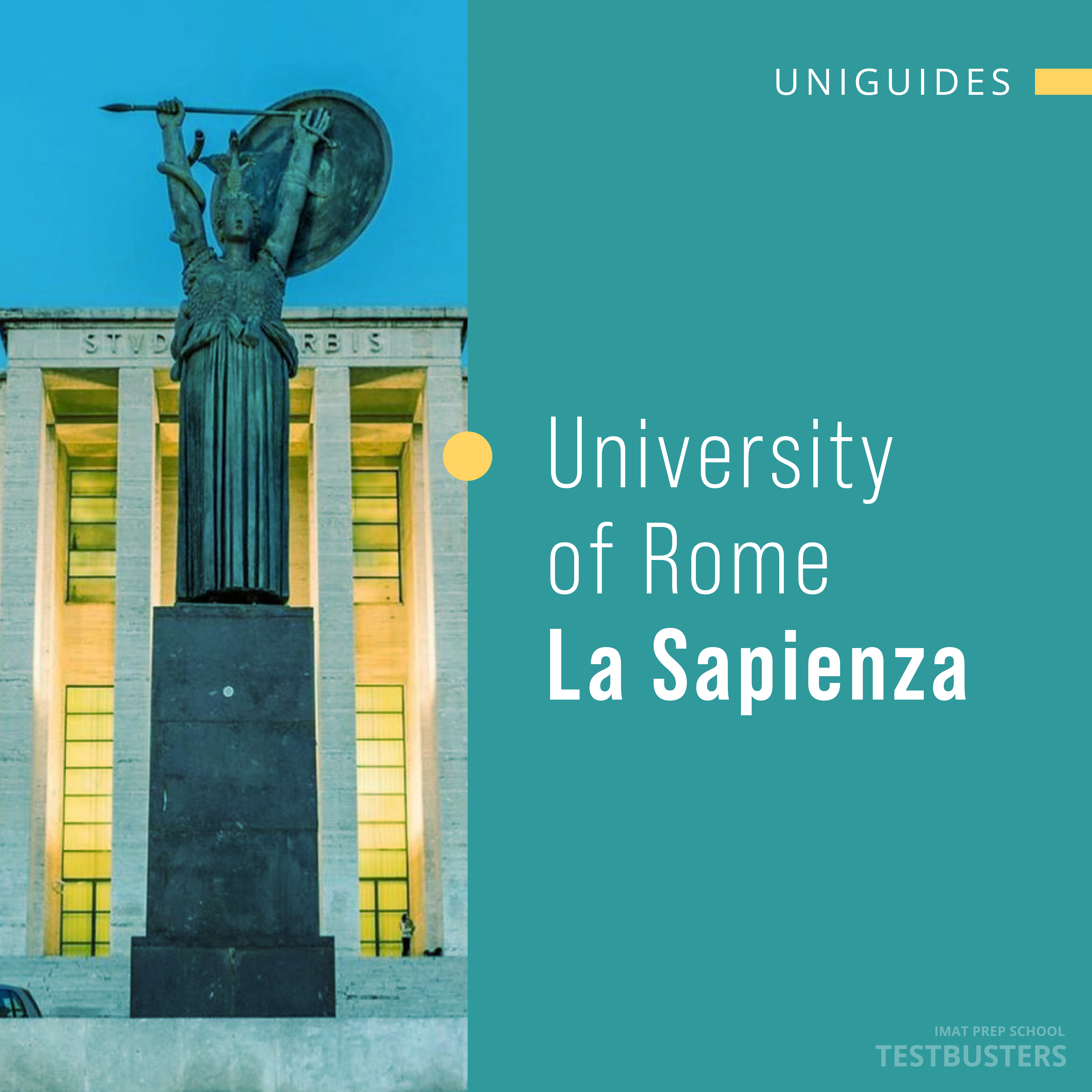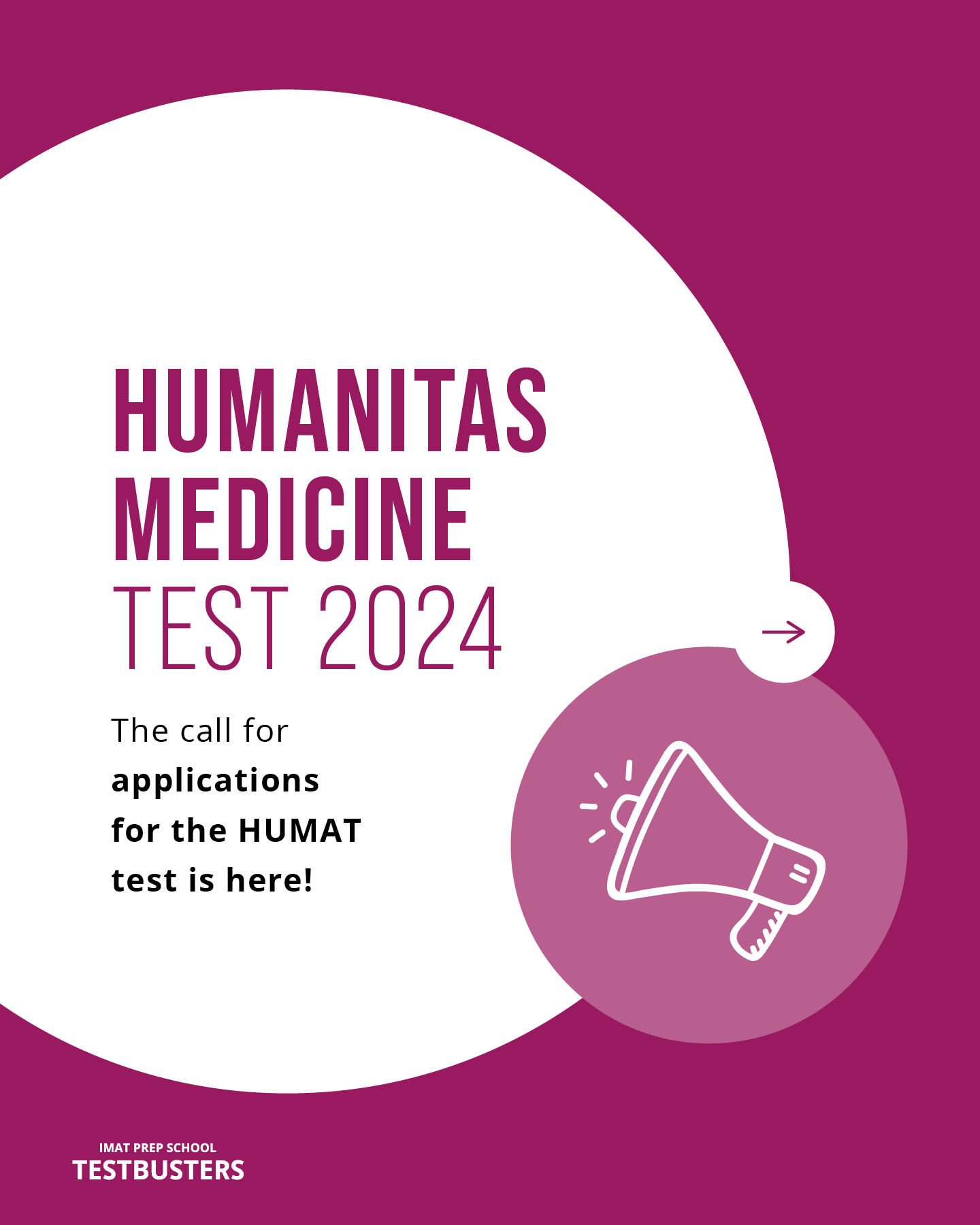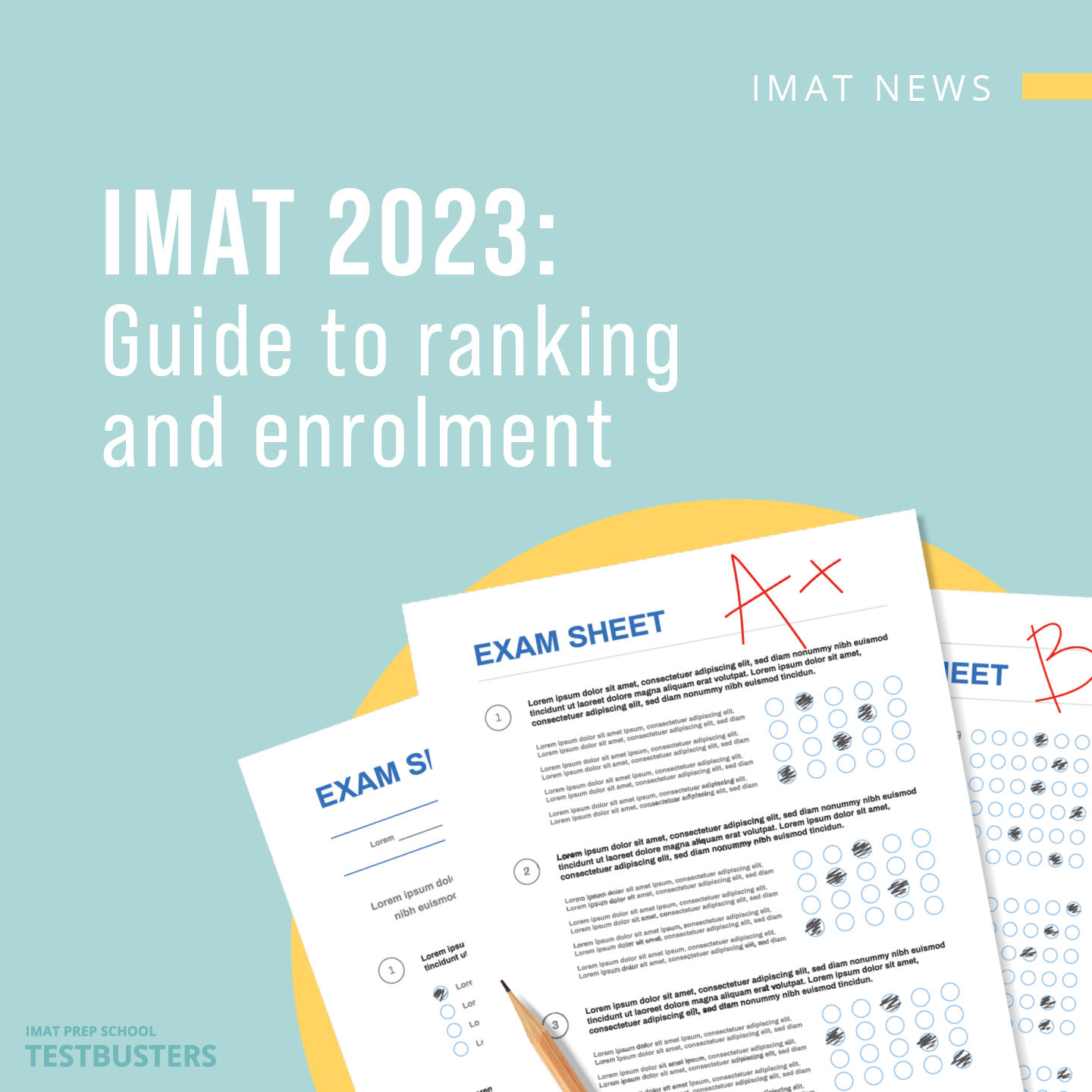Founded in 1303 by Pope Boniface VIII, the university of Rome “La Sapienza” is the largest university in Europe where you can find 120.000 students. With a large campus a few steps from Termini central station and various offices throughout the metropolitan area, it is characterised as a university where you can explore the field of research and study in all disciplinary sectors. The large campus is so big that it is called “Città Universitaria”, which means University City; here, you can find many buildings for different faculties. There is no main building for Medicine and Surgery, but you can find facilities for every branch of Medicine (i.e. Orthopedics, Neurology, etc).
University of Rome “La Sapienza”: Medicine and surgery
In 2010, La Sapienza started to host the Medicine and Surgery degree for students, fully taught in English.
In the 2022/2023 academic year, Medicine and Surgery will hold 48 students, of which:
- 38 for EU citizens
- 10 for NON-EU citizens.
As has happened recently, this number may also increase in the following years.
Location
The main campus of University of Rome “La Sapienza” is in “Quartiere San Lorenzo”, a lovely Roman area where you can find historical Roman attractions, pubs, and nightclubs if you want to go out with your friends. Just next to the main campus, you can find “Policlinico Umberto I”, the hospital with which the university is associated.
The University and the Hospital are easily reachable by metro B, tram (“linea 3” and “linea 19”) and bus (buses 495, 490, 649 and 88). Independently of the option you choose, the stop will consistently be named “Policlinico” and will always leave you a few meters from the University and the Hospital.
It is not suggested to go by car because it’s a bustling city and it’s challenging to find parking. Even going by bus is a bit risky because there is a high probability of getting stuck in the traffic of Rome and arriving late to class. So the tram and metro are the best options.
In conclusion, the best recommendation for when you are looking for a house is to find it near a metro or a tram station or near the university so that you can reach it on foot.
Educational Plan
The educational plan is identical to the Italian school of medicine; the only difference is, of course, the English language.
The course lasts six years; in the first and second years, you will acquire basic knowledge of the human body. There will often be exciting labs, such as anatomy or histology ones, to make the subjects more interactive. From the third year, you will start to study topics more related to pathologies, and you will begin to go to the hospital to see how a medical doctor works.
There is no need to worry about your English level since no certificate is required: moreover, just having passed the test certifies you with a C1 English language level.
Italian certificates are not necessary, but it’s strongly suggested to learn Italian, especially because when inside the hospital, patients and doctors speak the native language. So, learning Italian is deeply recommended. The university allows you to study Italian, giving a free course to all students.
Attendance is mandatory at 66%. Students must sign an attendance sheet or answer a roll call (depending on the professor). If you miss over 66% of all lessons for a class, you will not be allowed to sit for the exam.
Lectures are held on the main campus for the first and second years. For upper years some lessons will be held in the hospital and some on the main campus. Generally, the more you advance in the course, the more you will be in the hospital.
The first-year
First-year lessons are held on the main campus and start in the last week of October. The professors are the same as the Italian course; therefore, they are Italians teaching in English.
In the first year, you will have a total of nine exams.
First semester:
Human anatomy I: It’s the first of the three anatomy modules where you will explore the world of the musculoskeletal and cardiovascular systems. It consists of an oral exam that will challenge your mnemonic skills since you must memorise all the muscles, bones, ligaments, heart and major vessels. The other two modules will be held in the second year, respectively, in the first and second semesters.
Biology and Genetics I: It is the first of the two modules. It consists of a written multiple-choice exam. You will deal with general biology and genetics, dealing with the same topics as the IMAT test. Because this exam contains two subjects, you will receive two papers (one for biology and one for genetics). If you fail one of the two subjects. The final grade consists of the mean of the two subjects. Furthermore, you can choose not to take this exam and take the whole exam in the second module in an oral format. The best thing to do is to take both modules, and sit for the oral examination if you are not satisfied with your final mark.
Chemistry and introduction to Biochemistry: In this exam, you will study inorganic and organic chemistry. This exam consists of a written and an oral part. Firstly there will be the written part, where you will find multiple choice questions, solve some chemistry exercises and write the chemical formula of some general compound. If you pass the written, you will advance to the oral part with the professor.
Medical Physics: The exam name could be misleading; indeed, there is not much of “medical”. You are required to study general physics (Cinematics, Dynamics, etc.). This exam uses a particular format: in the middle of the semester, you can take an “esonero”, a written multiple-choice test with the topics covered that far. If you pass the “esonero”, you will not be asked about those topics in the exam (so it’s very convenient). The exam is a multiple choice test where you will be asked about every topic if you didn’t do/pass the “esonero”; if you passed the “esonero”, you will only be asked about the topics of the second part of the course. If you passed the exam but are not satisfied with your evaluation, you can take an oral exam (be careful, though: it may not always be better).
Basic Medical Scientific Methods I (BMSM I): This exam is the first of two modules; it consists of three different subjects (Medical Statistics I, Internal medicine and History of medicine). This exam consists of three multiple-choice tests. At the exam, you will receive three papers (one per subject); if you fail one of these three, you will fail the exam. Don’t worry because the syllabus of each topic is pretty tiny and the exam is easy. The final mark will be the mean of the three subjects.
Second semester:
Biochemistry I: It is the first of the two biochemistry modules. The exam is written: you will find some multiple-choice questions, two open questions and the chemical structure of essential compounds that you will need to write down. The major topics you will find are protein fold and enzyme mechanism.
Biology and Genetics II: This is the second and last module of biology and genetics. As for the first module, the exam consists of two multiple-choice tests (one for biology and one for genetics). In this exam, you will do the topics you didn’t get in the first module. The final grade consists of the mean of the two modules. If you passed the exam but are not satisfied with your final mark, you can take an oral exam (be careful, though: it may not always be better). N.B. You can choose not to take the first module and do the whole exam orally (see Biology and Genetics I).
Histology and Embryology: In this exam, you will explore microscopic anatomy and prenatal development (Embryology). It is an oral exam in which you will be face-to-face with the professor. During the semester, you will be able to do 2 “esonero” (see Medical Physics), so that you will not be asked about some embryology topic at the final oral examination.
Basic Medical Scientific Methods II (BMSM II): This exam is the last module of BMSM; it comprises four different subjects (Scientific English, Forensic medicine, Psychology and Epidemiology). This exam consists of four multiple-choice tests. You will receive four papers (one per subject); if you fail one of these, you will fail the exam. The final mark will consist of the mean of the two modules.
ADE:
During the year, some ADE will be organised. An ADE is a semi-mandatory lesson that gives you 0.2 credits, and to graduate, you will have to have a total of 8 CFU from all the ADE you did during the six years.
For the first year, lessons are in the afternoon, usually from 2:00 PM to 7:00 PM.
For further information, the timetable for all years is available here.
University of Rome “La Sapienza”: pros and cons of Medicine and Surgery
Pros:
- Usually, Italians make up less than 50% of the whole class; therefore, you can interact with many international students. Generally speaking, a cosmopolitan environment allows you to come into contact with many different cultures and traditions.
- Classes are small, so lessons are more interactive, and there are better relations with professors. Moreover, there is a greater possibility of doing clerkships.
- The English language has become central in all medical and scientific research, so studying in English will give you access to all the medical literature.
- The university is just next to the hospital; therefore, during clerkships, you can go to the wards in the morning and follow lessons in the afternoon without moving around Rome.
- The English degree is equivalent to the Italian one.
- The secretary’s office for Medicine and Surgery is placed directly inside the main campus, which gives you direct contact in case of issues or organisational problems, without booking an appointment, waiting excessively or going to the other side of town.
Cons:
- The professors are Italian, so sometimes their English is a bit basic.
- The structures and the classrooms are ancient.
- Clerkships are in Italian; therefore, it’s strongly recommended to learn some basic medical Italian terminology before going to the hospital.
Lunch and Libraries
There are 48 public libraries where you can study and be found inside (generally, each department will have at least one) or near the campus.
Here is an interactive map.
There are three 24-hour reading rooms: Earth Sciences Library (Geology Building, CU005), Basic and Applied Sciences for Engineering Library (Sala Ghizzetti, Via Antonio Scarpa 16, RM007 Building) and Oriental studies (Marco Polo compound, Circonvallazione Tiburtina, 4 – building RM021). The others are generally open.
Next to “La Sapienza” are also two canteens associated with the university (one in Via Cesare de Lollis 22, the other in Via del Castro Laurenziano, 7b) where students can eat for a low price which depends on the family’s income. Next to the university, there are lots of places where you can eat every kind of food (i.e. pizza, poke, sandwiches, etc.) for a low price.
Studying abroad
University of Rome “La Sapienza” offers many possibilities to study abroad, all under the Erasmus+. Erasmus is an exchange program which allows students to spend up to 12 months abroad at partner universities throughout Europe (usually Portugal, Spain, Poland, Finland, France, Germany, Austria and the Czech Republic) and even outside Europe. Keep in mind that some countries require a specific language level. There are three types of calls that you can apply for:
- Erasmus+ for studies – Allows you to spend time abroad within Europe. You will submit a list of country preferences, but your home university chooses the final destinations. The period abroad is usually 3-12 months.
- Erasmus+ Traineeship – Allows you to do an internship in a country of your choice within Europe. You will have to do everything on your own: find the country, city and place that will accept you. The period abroad is usually from two to three months (90 days).
- Erasmus+ International Credit Mobility (Erasmus ICM) – This call is limited only to countries outside of the EU. Usually, there are very few spots, sometimes only one or even 0. The period abroad is generally from three to six months.
For more information study abroad.
Secretary’s Offices
The Secretary’s Office is open to the public on the following days and times:
- Monday, Wednesday, and Friday from 8.30 am to 12.00 am
- Tuesday and Thursday from 2.30 pm to 4.30 pm
Main office:
- Address: Città Universitaria, Palazzo delle Segreterie – Servizi Generali, V.le Regina Elena, stairway A, ground floor
- Phone: (+39) 06.49912951
- Email: [email protected]
Medicine and Surgery Office:
- Address: Palazzina ex SCRE -Presidenza della Facoltà di Farmacia e Medicina-, ground floor, room 3, Azienda Policlinico Umberto I
- Phone: 06.49970836
- Email: [email protected]
Enrollment:
You can register at Medcine and Surgery right after you are assigned according to the ranking list. Enrolment procedures vary according to the various types of students, but generally, you will have to access infostud 2.0 and follow the instructions from there; you will be sure to be enrolled once you pay the first university fee for the course.
To ensure you don’t miss any steps, you can follow the instructions at this link.
Transferring
If you pass the IMAT test, you can move to and from other Medicine and Surgery courses that require an IMAT test, but this depends on the number of places available, which varies according to the number of withdrawals from studies (and therefore are usually few).
If you study medicine at a university that doesn’t require the IMAT test, you will not be able to transfer at the University of Rome “La Sapienza”.
Since many universities have different study plans, some exams will not coincide, but there is a discreet chance to obtain an exam validation. The main requirements are the number of CFUs (which cannot be less than the one given by the Medicine and Surgery course), the topics that need to be similar, even if it depends on the professor and the exam must have been taken in English.
For further information, you can visit this link.
Scholarships
there are several opportunities for scholarships at Rome – La Sapienza. The ones worth mentioning are:
- Student-collaboration scholarships: These are paid internships for students enrolled from the second year. Selected students will collaborate with university structures such as libraries, laboratories, interactive rooms, reception and information centres for students, stages and promoting activities.
- Research and working scholarship: you will find various announcements here.
- International Post-degree Scholarship: These scholarships grant advanced education to Sapienza Graduated (Masters’s Degree -two years courses/ single cycle courses/ old system). The scholarship last from 6 to 12 months.
- Art. 27 bis exam bonus: La Sapienza rewards meritocratic students by reducing taxes depending on tour mean and the number of exams you gave.
To know all the scholarships that Sapienza offers, click here.
Accommodations
Sapienza periodically issues new calls to identify housing opportunities for university students through agreements with public and private rental agencies.
Housing available through special arrangements is reserved for:
- Students enrolled at Sapienza University,
- Students who have to take a Sapienza admission exam,
- International students participating in academic, didactic and cultural exchanges with La Sapienza University.
For further info, click here.
Conclusion
In conclusion, studying at University of Rome “La Sapienza” is a great opportunity because you study in an international environment and simultaneously live and can visit one of the world’s most beautiful cities.
We hope this article helped you to have a clearer idea about the La Sapienza Medical School and wish you good luck! Discover other Italian universities.
– Filippo Maria Bassi –



